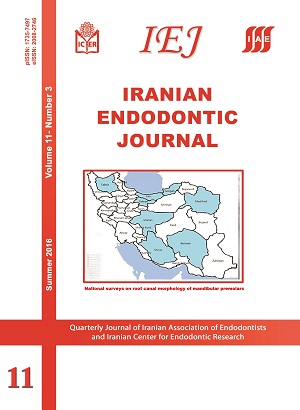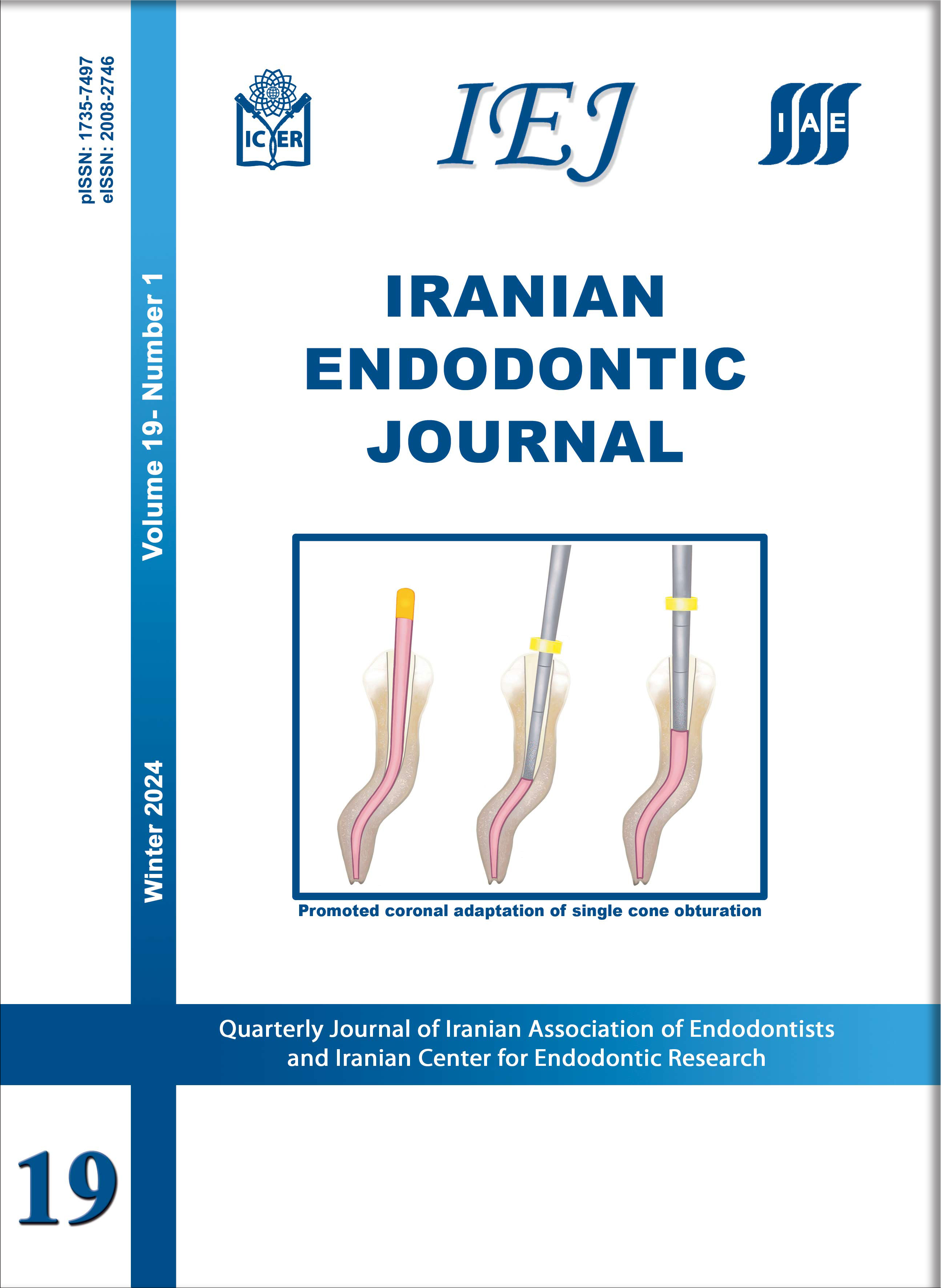Root Canal Morphology of Permanent Mandibular Premolars in Iranian Population: A Systematic Review
Iranian Endodontic Journal,
Vol. 11 No. 3 (2016),
30 June 2016,
Page 150-156
https://doi.org/10.22037/iej.v11i3.11333
Introduction: It is essential for clinicians to have knowledge about root canal configuration, although its morphology varies largely in different ethnicities and even in different individuals within the same ethnic group. The current study reviewed the root canal configuration of root canals in mandibular first and second premolars among Iranian population based on independent epidemiological studies. Methods and Materials: A comprehensive search was conducted on retrieved articles related to root canal configuration and prevalence of each types of root canal in mandibular premolars based on Vertucci’s classification. An electronic search was conducted in Medline, Scopus and Google Scholar from January 1984 to September 2015. Results: In eleven studies conducted in eight provinces, 1644 mandibular first premolars and 1268 second premolars were investigated. Within mandibular first premolars, 70.9% were Vertucci's type I, followed by 10.4% type III, 7.18% type IV, 5.23% type II and 5.16% type V. In addition, among mandibular second premolars, 82.86% were type I, 6.25 type III, 5.32% type II, 4.27% type IV, and 0.69% type V. Conclusion: These results highlight the necessity of searching for additional possible root canals by clinicians. Moreover, these results indicated the ethnical characteristics of Iranian population regarding the morphology of mandibular premolars compared to other populations.
Keywords: Anatomy; Iranian; Mandibular Premolar; Review; Root Canal




